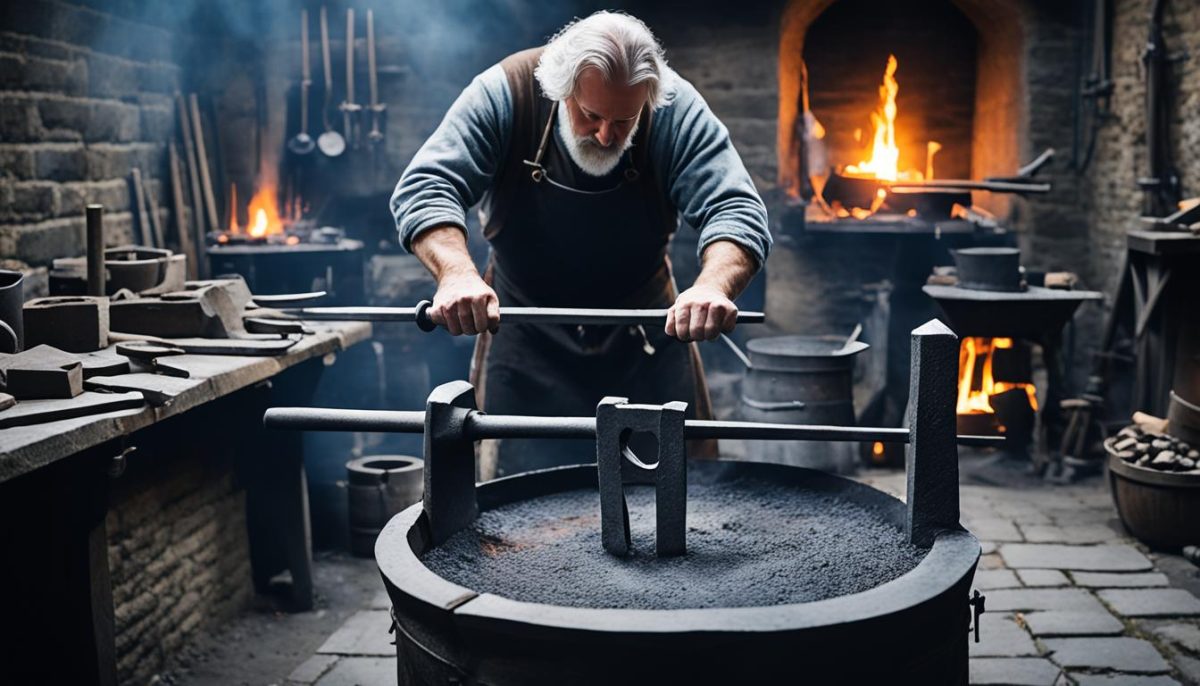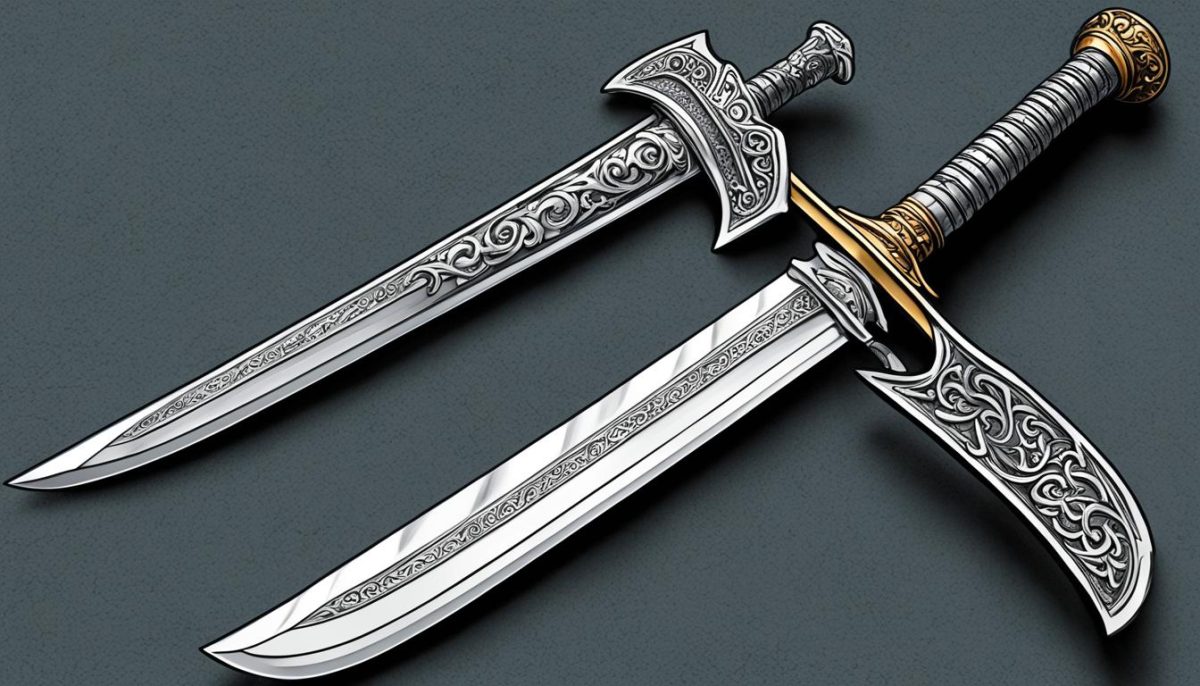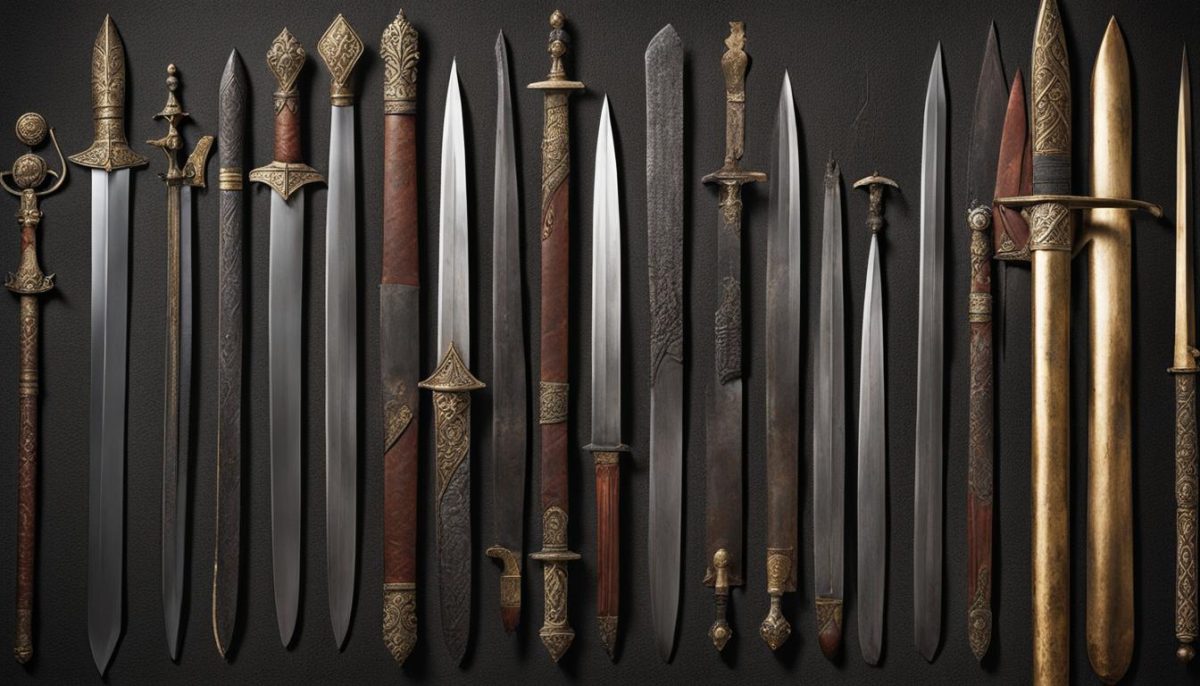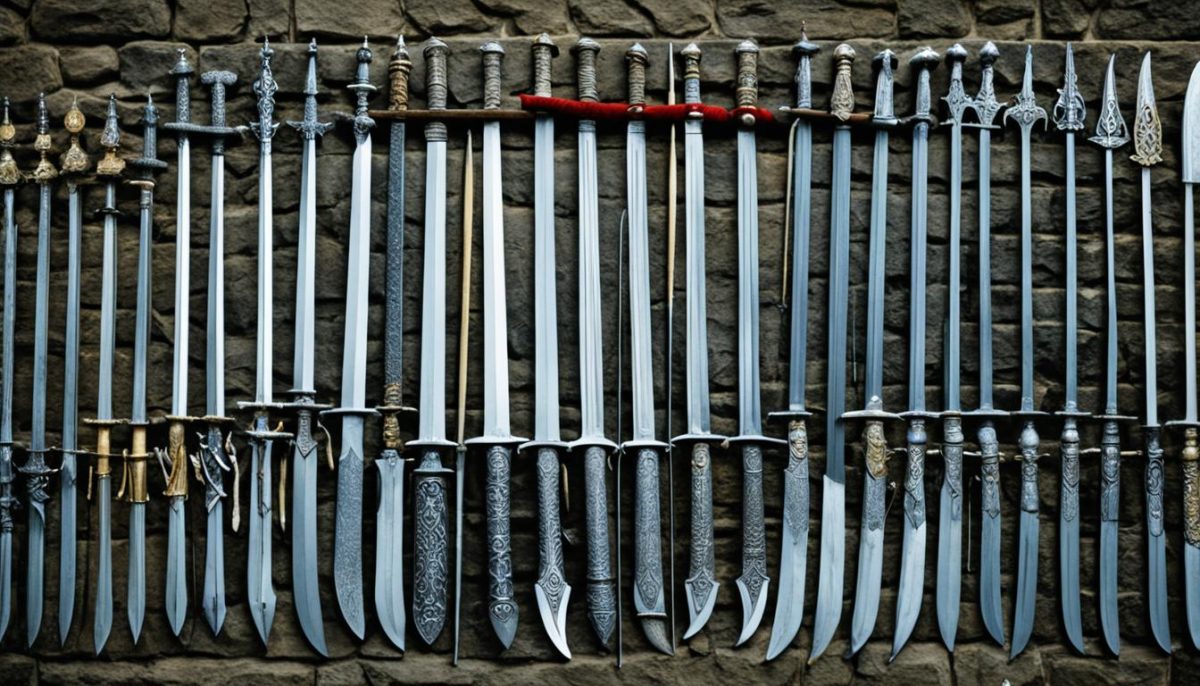When we think of knights and warriors of the past, heavy swords and grueling battles often come to mind. But how heavy were these blades of medieval weaponry truly? Throughout time, the historical sword weight has been mired in myth and exaggeration, painting a picture far from the reality faced by combatants in the Middle Ages. It’s high time to explore the authentic sword weight and set the record straight on the physical attributes of these steel icons. Weight, after all, was a significant factor in the design and use of a sword, influencing its effectiveness in combat scenarios.
Our journey delves into the annals of history, where scholarly research, museum records, and archaeological findings converge to provide us with concrete evidence. Understanding the range of weights across different sword classes reveals a picture that defies the popular beliefs of unwieldy and cumbersome weapons. From the agile arming sword to the majestic two-handed greatsword, each had its unique balance and purpose. Join us as we uncover the true scale of medieval swords, appreciating the blend of lethality and artistry that makes these ancient weapons continue to fascinate.
Understanding Medieval Swords: Types and Purposes
The medieval era is renowned for the diversity of its sword types, each with distinct purposes and an intricate military blade design. Swords such as the longsword were pivotal in combat, while others served more ornamental roles. Exploring the nuances of these weapons illuminates a rich tapestry of martial history.
The longsword, characterized by its cruciform hilt and double-edged blade, was commonly used in the gripping combat of the Middle Ages. This weapon required both dexterity and strength to wield effectively in battle. Similarly, the broadsword, with its wider blade, was a symbol of power on the battlefield. The arming sword, slightly more compact, was a knight’s companion for close-quarters combat.
In contrast, ceremonial swords were rich in symbolism and often more elaborately designed. These weapons, ornamented with jewels and intricate engravings, played a significant role in rituals and were a status symbol amongst the nobility. Despite their grandeur, they were built adhering to the fundamental principles of sword types, ensuring that they maintained balance and form.
“Each type of medieval sword serves as a window into the culture and technology of the era, reflecting the sophistication of the design and the intent of its use.”
Cultural influences created variations in sword types, with each region imparting its touch to the military blade design. Technological advancements during the medieval period also facilitated the development of new methods for creating hardened and more resilient combat swords.
- Longsword – A mainstay in medieval combat, valued for its versatility.
- Broadsword – Its wide blade was a testament to the brutal clashing of steel.
- Arming Sword – Essential for a knight, it was a trusted sidearm in battle.
- Ceremonial Swords – Beyond battlefields, these swords were emblems of honor and tradition.
Historical texts and academic research provide us with a deeper understanding of these weapons. Scholars such as Ewart Oakeshott have classified these swords, giving us detailed insight into their use and significance. Whether on the battlefield or during a ceremony, each sword had a story to tell—a narrative woven into the fabric of medieval society.
The Craftsmanship Behind Medieval Swords
The art of sword-making techniques has evolved profoundly over the centuries, with blacksmiths and metalworkers honing their craft through rigorous trial and error. Historical metallurgy played a crucial role in the development of durable swords that could withstand the rigors of combat. In the medieval era, blacksmithing was not just a trade but an essential part of warfare and the cultural fabric.

To understand the complex process behind these weapons, one must delve into the materials and methods utilized by blacksmiths of the time. The predominant material for sword blades was steel, known for its ability to be both hard and flexible. Variations in carbon content and forging techniques gave rise to different levels of strength and sharpness, making the process both a science and an art.
Let us explore the key elements that contributed to the making of a medieval sword:
- Selection of Materials – The choice between wrought iron and steel was significant. Blacksmiths often used a combination of both to create swords with a hard, sharp edge and a resilient spine.
- Forging and Shaping – The metal was heated to high temperatures and hammered into shape, a method known as forge welding. Numerous cycles of heating and forging were critical for enhancing the sword’s strength.
- Quenching and Tempering – These heat treatment processes were vital for achieving the desired hardness and flexibility in the blade, respectively.
- Grinding and Polishing – After forging, the swordsmith would carefully grind the blade to sharpen it and polish it to a shine, making it not only functional but also visually impressive.
- Assembly and Fittings – Finally, the hilt, pommel, and crossguard were expertly fashioned and attached to create a fully functioning sword.
The sword-making profession demanded a blend of physical skill, knowledge of materials science, and an artistic touch to produce weapons that were reliable on the battlefield and beautiful in appearance.
| Component | Material Used | Process | Characteristic Improved |
|---|---|---|---|
| Blade | Steel (carbon content varies) | Forge welding, quenching, tempering | Sharpness, strength, flexibility |
| Hilt | Iron, steel, sometimes adorned with precious materials | Casting, fitting | Comfort, grip, balance |
| Pommel and Crossguard | Iron, bronze, occasionally gold or silver for ceremonies | Forging, engraving | Counterbalance, protection, aesthetic |
Even today’s metalworkers, who revere historical metallurgy, strive to replicate these traditional sword-making techniques, seeking authenticity in their re-creations. Unearthing the secrets locked within historical manuscripts and translating them into real-world blacksmithing practices is no small feat. Indeed, it bridges the past with the present, breathing life into the legendary craft of medieval swordsmanship.
Medieval Swords Weigh: A Historical Perspective
The mass and balance of medieval swords have long been subjects of fascination and myth within both scholarly circles and public imagination. Contemporary understanding of these historical weapons has been shaped significantly by extant sword documentation and through meticulous examination of surviving examples.
Documentation and Records
Medieval weapon inventories provide a wealth of information regarding the actual weights of swords used in historical times. Such documentation reveals that the weight of these blades often defied the exaggerated claims of modern myth, showing a more nuanced and practical design geared for combat efficiency over brute force.
Comparison to Modern Replicas
When juxtaposing historical replicas with their authentic counterparts, discrepancies can be noted not only in weight but in distribution and balance. Historians and blacksmith artisans who specialize in the reproduction of these historical weapons offer insights into the challenges of accurately replicating the nuanced design of medieval swords.
Myths vs. Reality
The idea that medieval swords were unwieldy or excessively heavy is one of the most enduring weight myths. In reality, these weapons were designed with the understanding that a sword’s effectiveness is compromised if its weight prohibits swift and sustained use in battle conditions. To this end, historical replicas serve as tangible evidence against such fallacies, proving that historical sword craftsmanship was both sophisticated and practical.
| Type of Sword | Average Weight (Historical) | Average Weight (Replica) | Notes |
|---|---|---|---|
| Longsword | 2.5 to 3.5 lbs | 3 to 4 lbs | Longswords favoured balance for versatility |
| Broadsword | 3 to 4 lbs | 3.5 to 4.5 lbs | Broadswords typically featured a wider blade |
| Arming Sword | 2 to 3.2 lbs | 2 to 3 lbs | Arming swords were lighter and used with a shield |
Handling and Usage of Medieval Swords in Combat
The mastery of sword handling in the medieval era was not merely a function of brute strength, but a fine art steeped in the nuances of balance and agility. For the knights and soldiers of the period, the weight of their swords was a pivotal factor that influenced their combat techniques and effectiveness in battle. Acknowledging the role of a sword’s heft in warfare provides valuable insight into medieval combat mechanisms and the training undertaken by those who bore these steel extensions of their arm.
The Role of Weight in Swordsmanship
A sword’s weight was integral to the style and approach of a combatant’s movements. Swords with substantial mass required a swordsman to have heightened stability, while lighter blades allowed for quick, precise strikes. The distribution of weight along the blade also affected the lethality and defense maneuvers during engagements. Swordsmen training incorporated exhaustive drills to perfect the handling of the sword, ensuring warriors could wield their weapons with dexterity, regardless of the weight. These skills were honed through rigorous regimens that balanced strength, endurance, and technique—cornerstones of medieval combat supremacy.
Training and Conditioning
The arduous training and conditioning of medieval swordsmen cannot be overstated. From squires to seasoned knights, each class of fighter underwent personalized swordsmen training to build muscle memory and acclimate to the weight of their chosen blade. This groundwork was laid out in historical combat manuals, detailing exercises that would prepare the body and mind for the rigors of close-quarter battles. The focus was on creating soldiers capable of sustained combat, wielding their swords with efficiency for extended periods, a testament to their rigorous physical preparation.
Case Studies: Famous Battles and Swordsmen
Illuminating the theoretical aspects of sword handling and combat techniques are the practical applications found in the chronicles of historic skirmishes. Documented military history records and personal diaries provide detailed accounts of battles where the might of the sword was on full display. Legendary swordsmen of the era were often distinguished not only by their prowess in battle but also by their adeptness in manipulating the weight of their swords to gain strategic advantage. These narratives offer compelling evidence of how skill with the sword could alter the course of conflict and etch names into the annals of warfare history.


